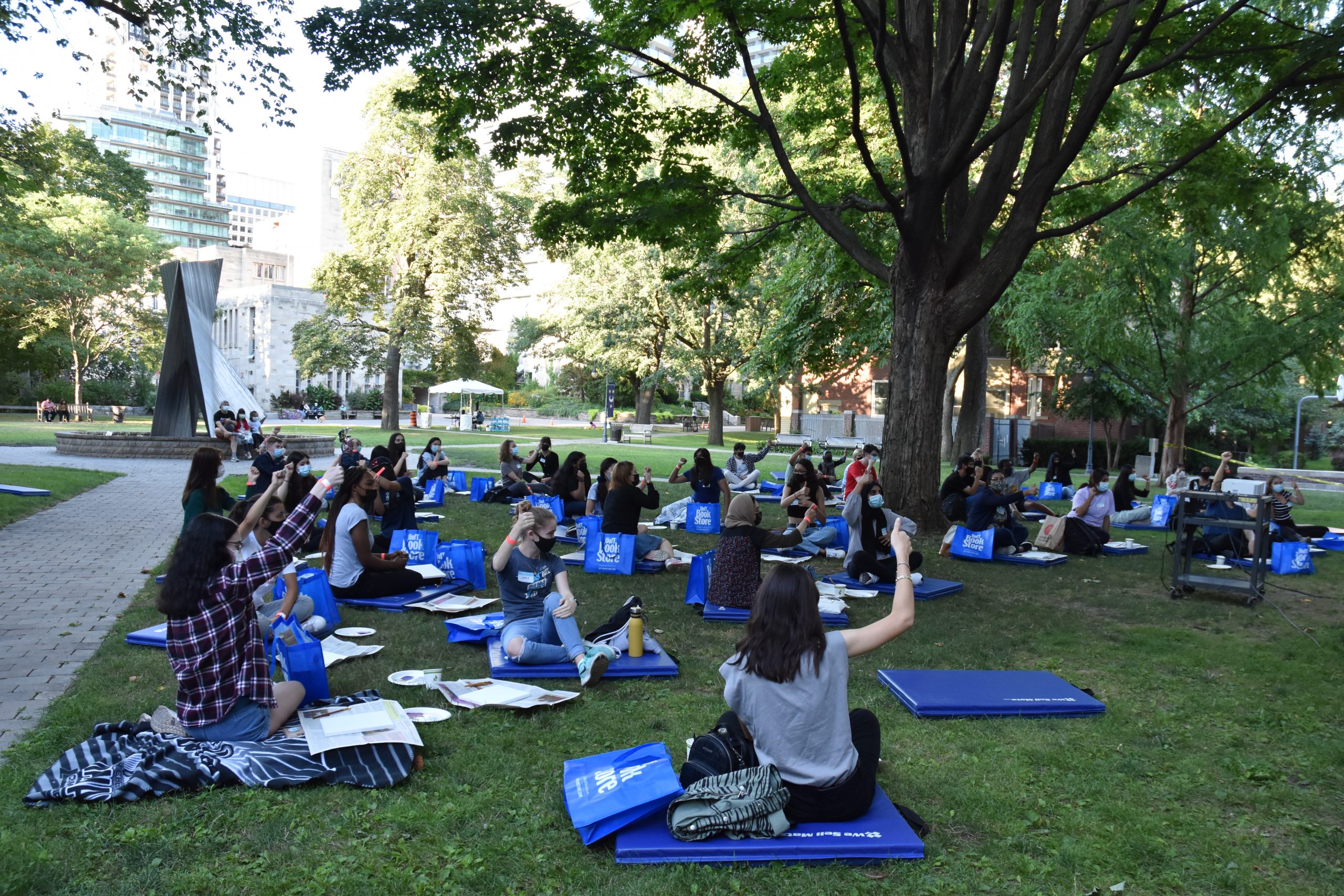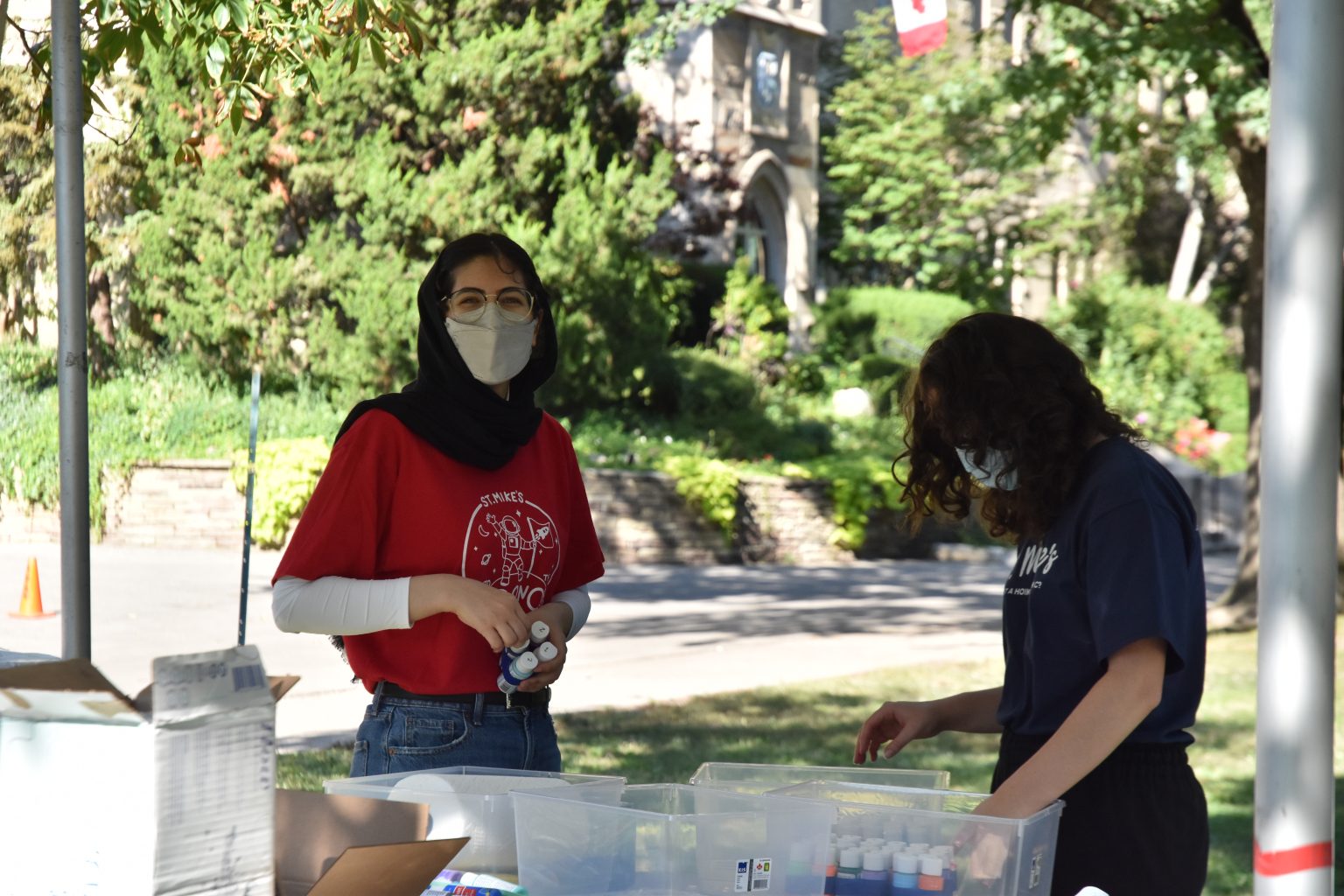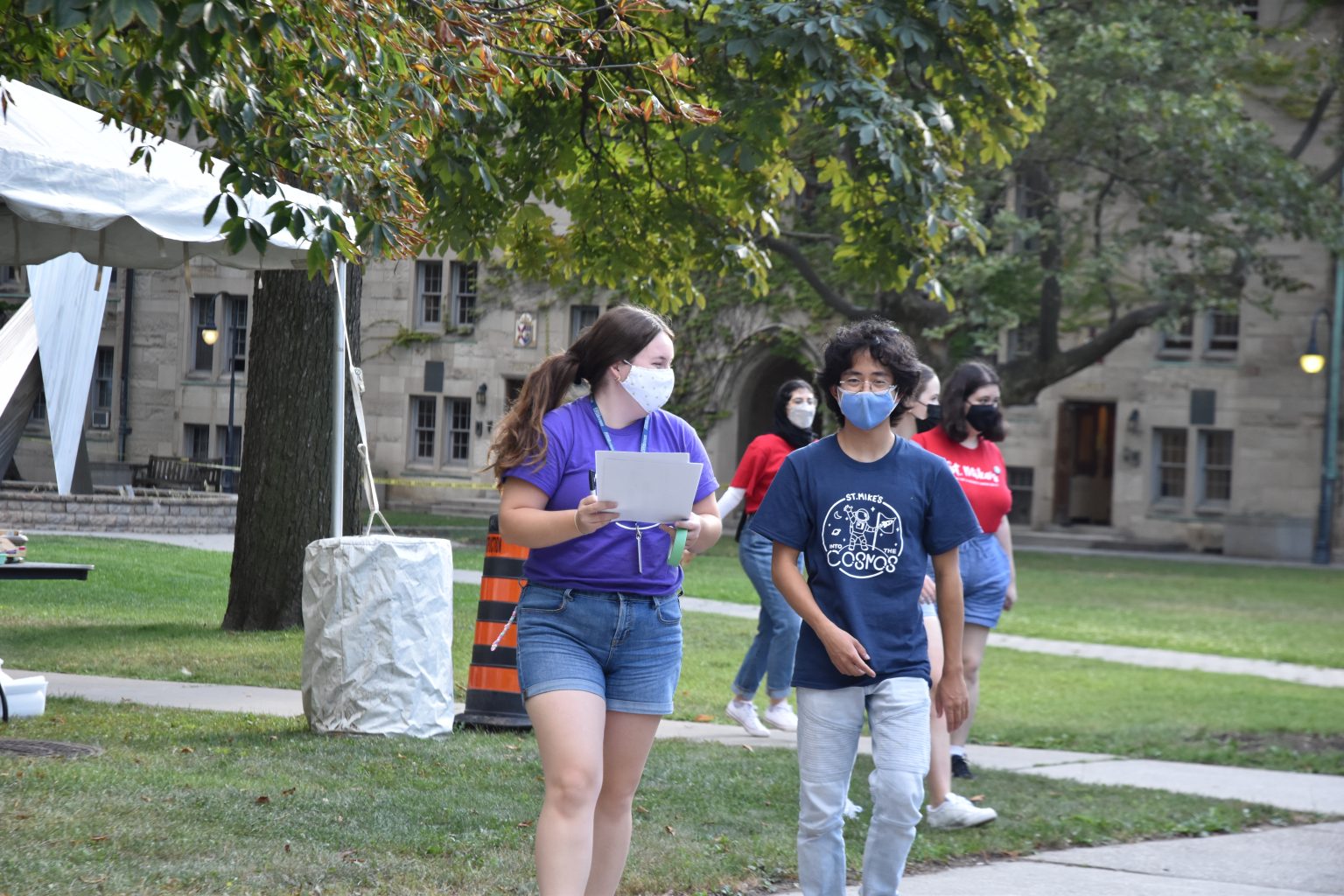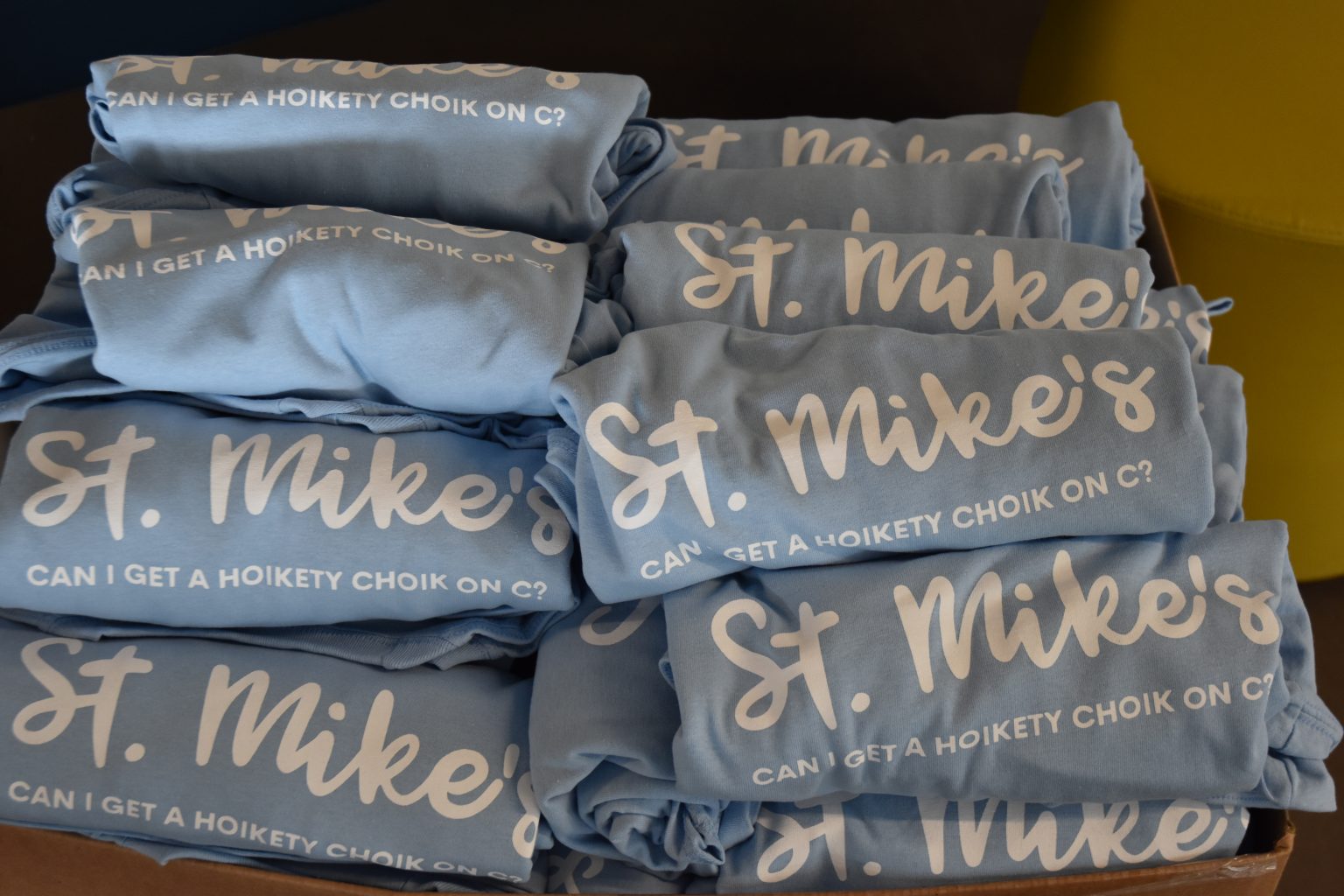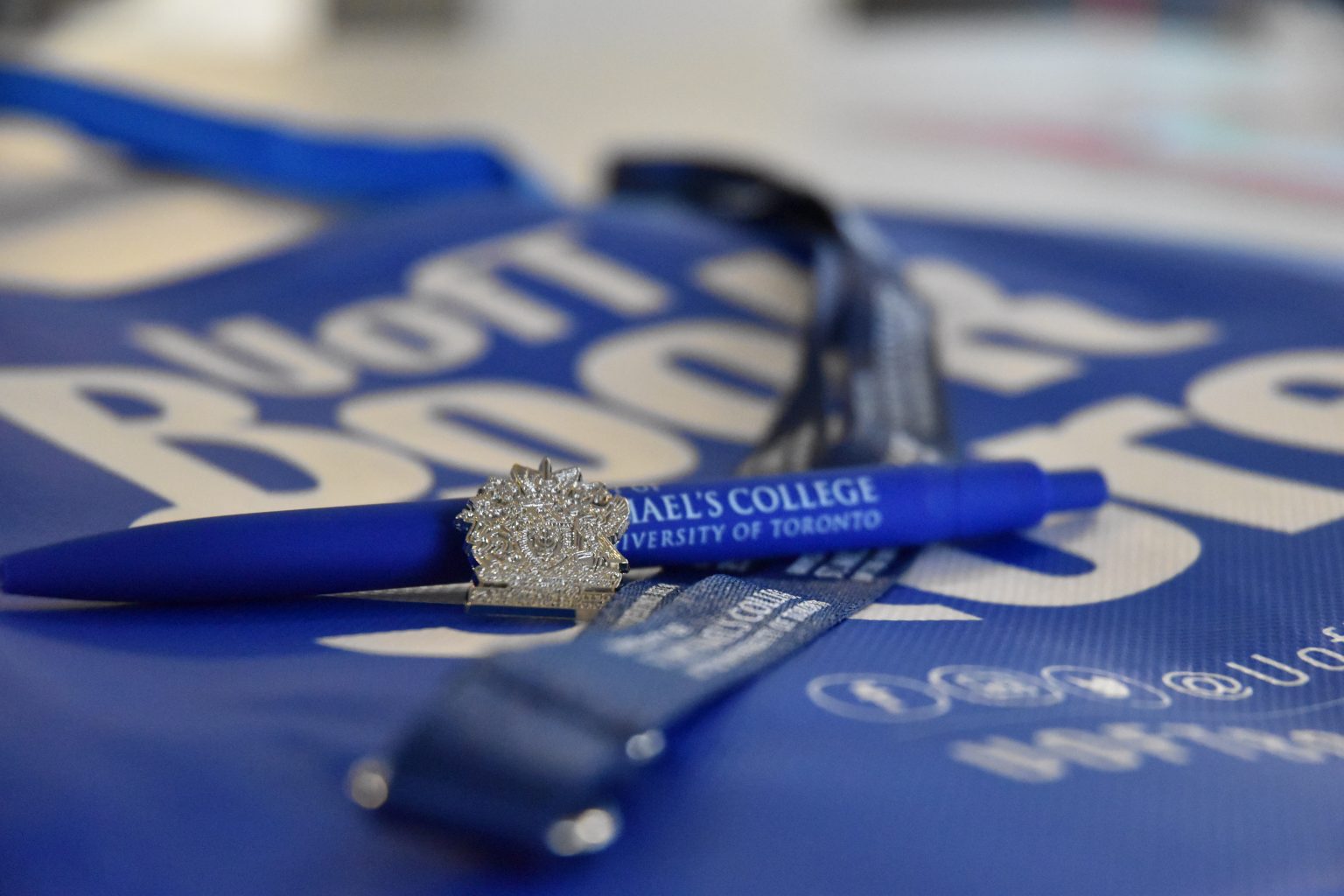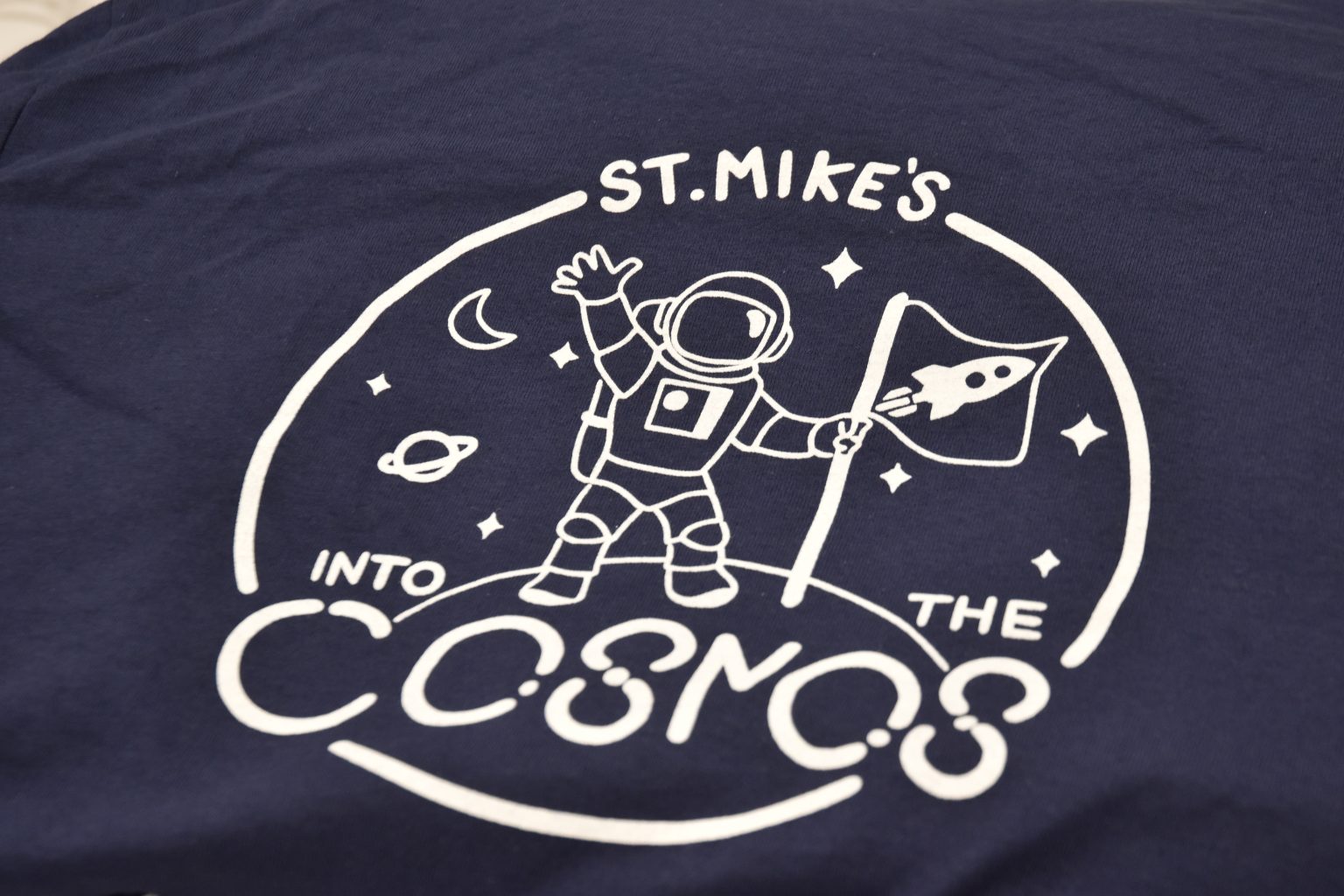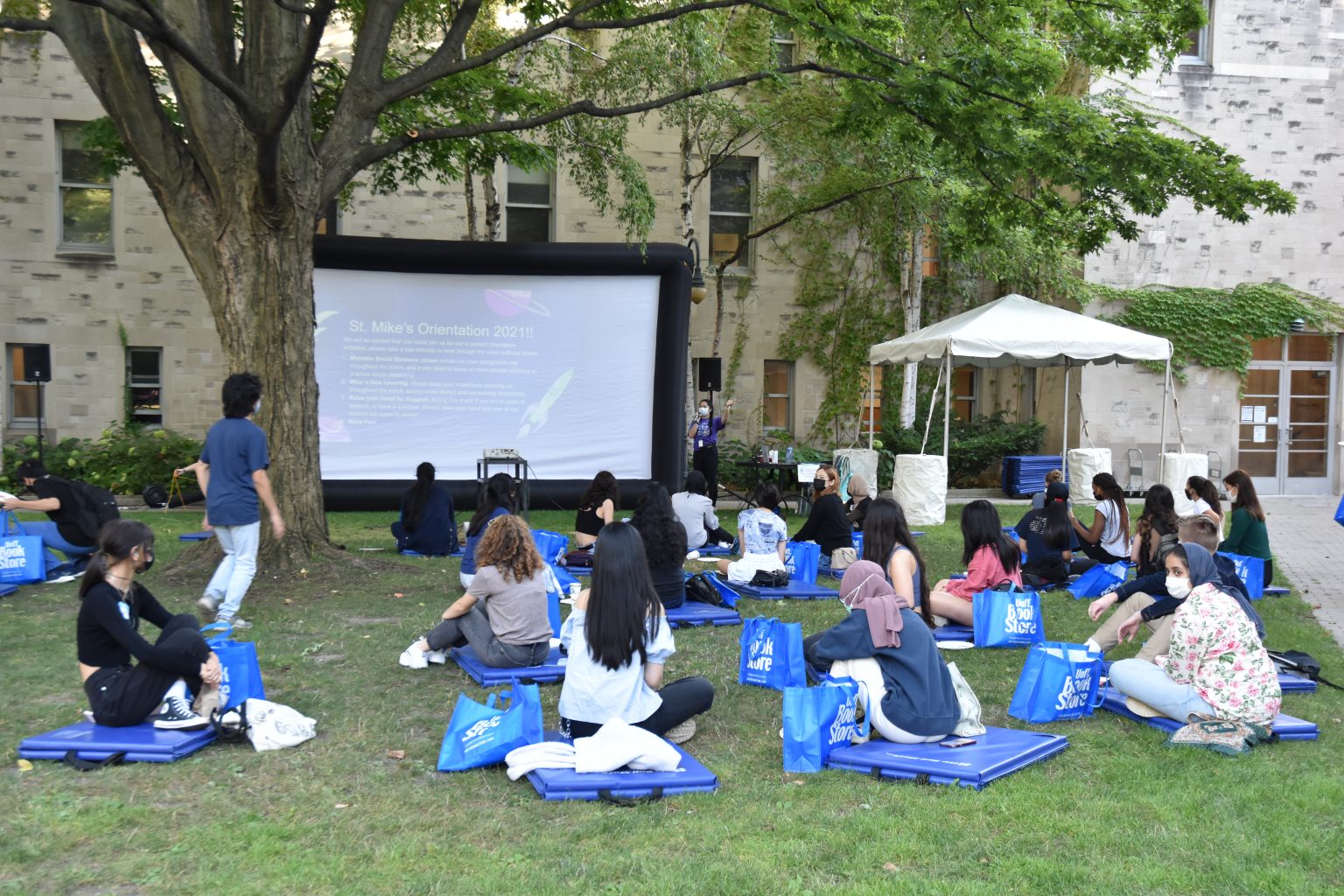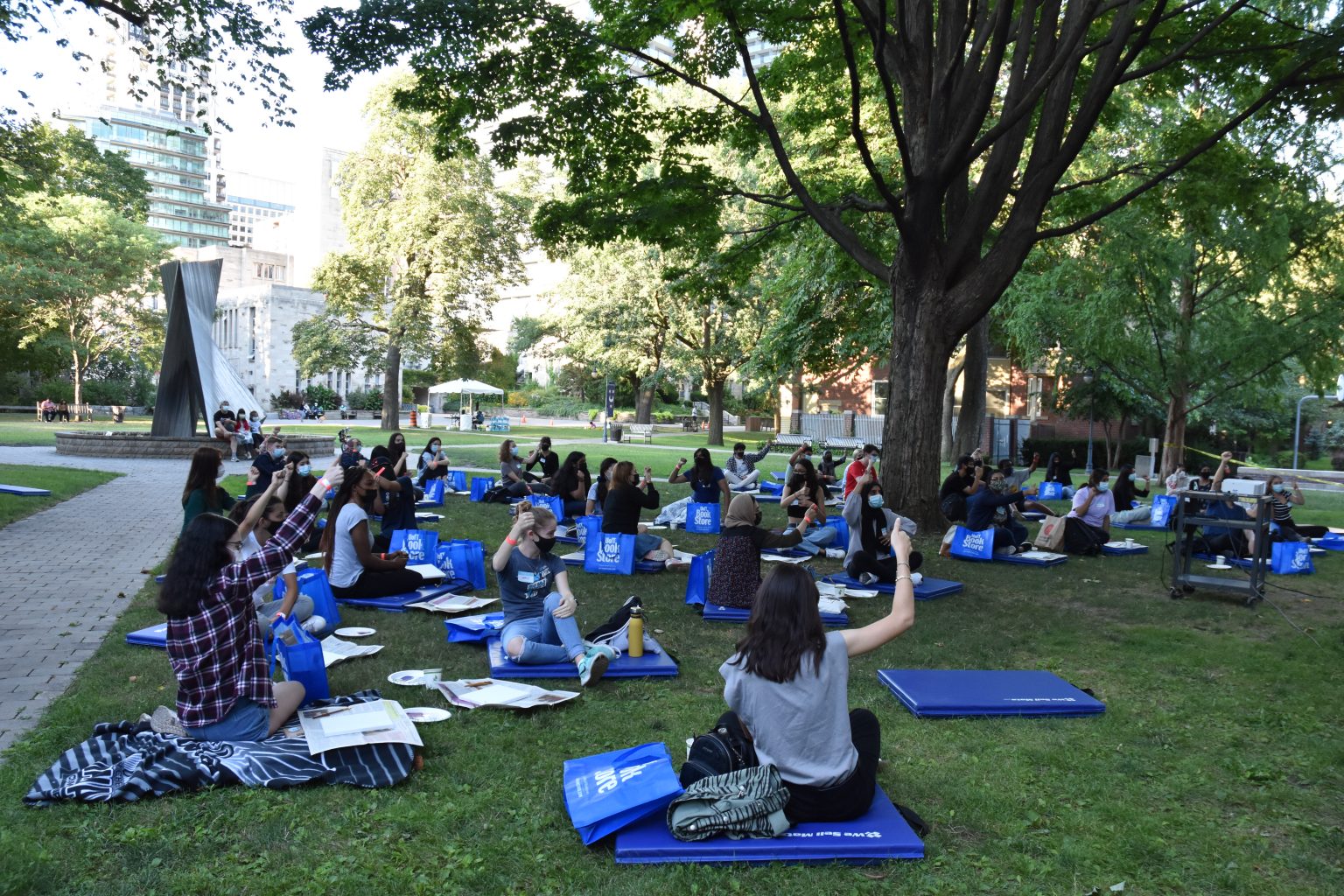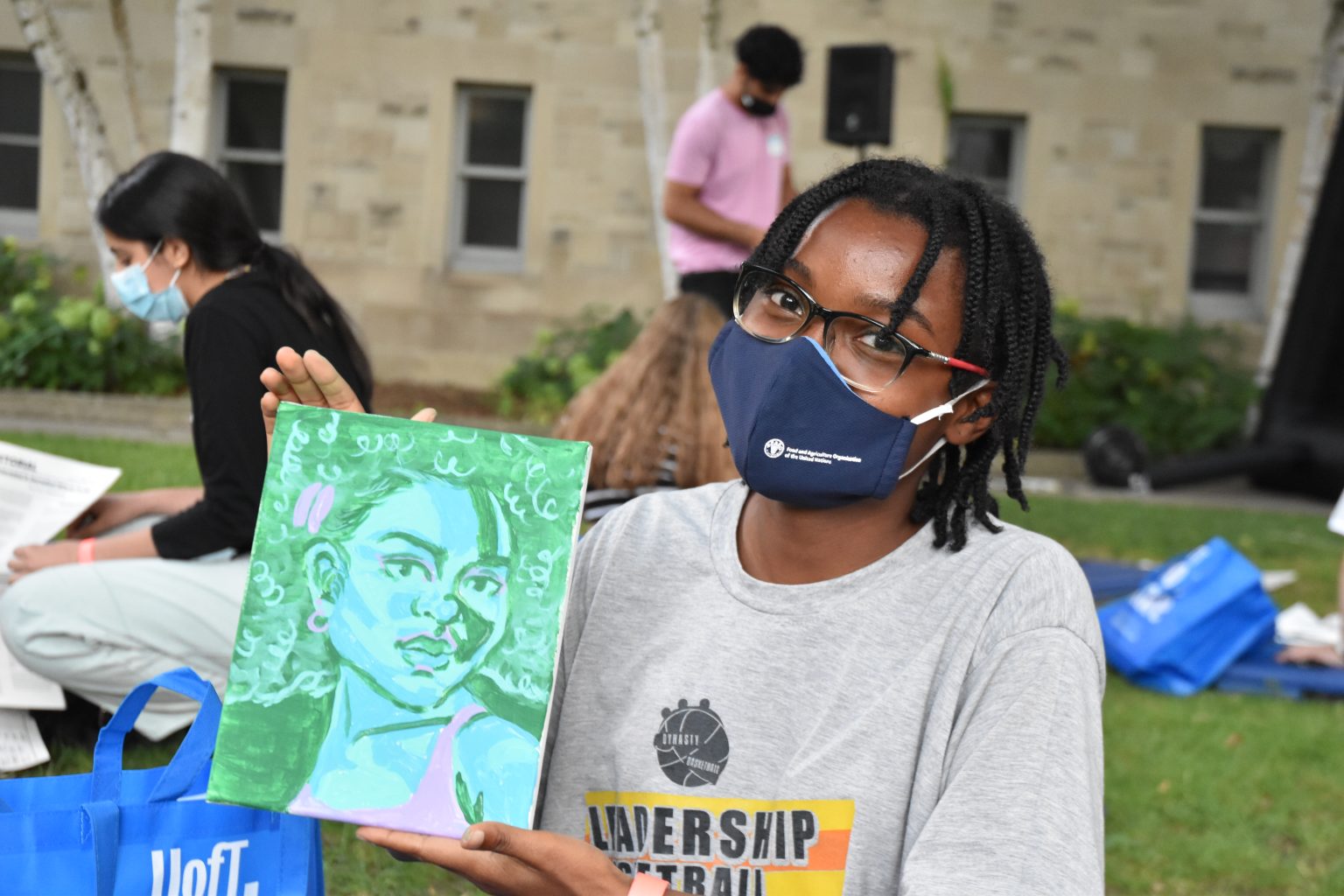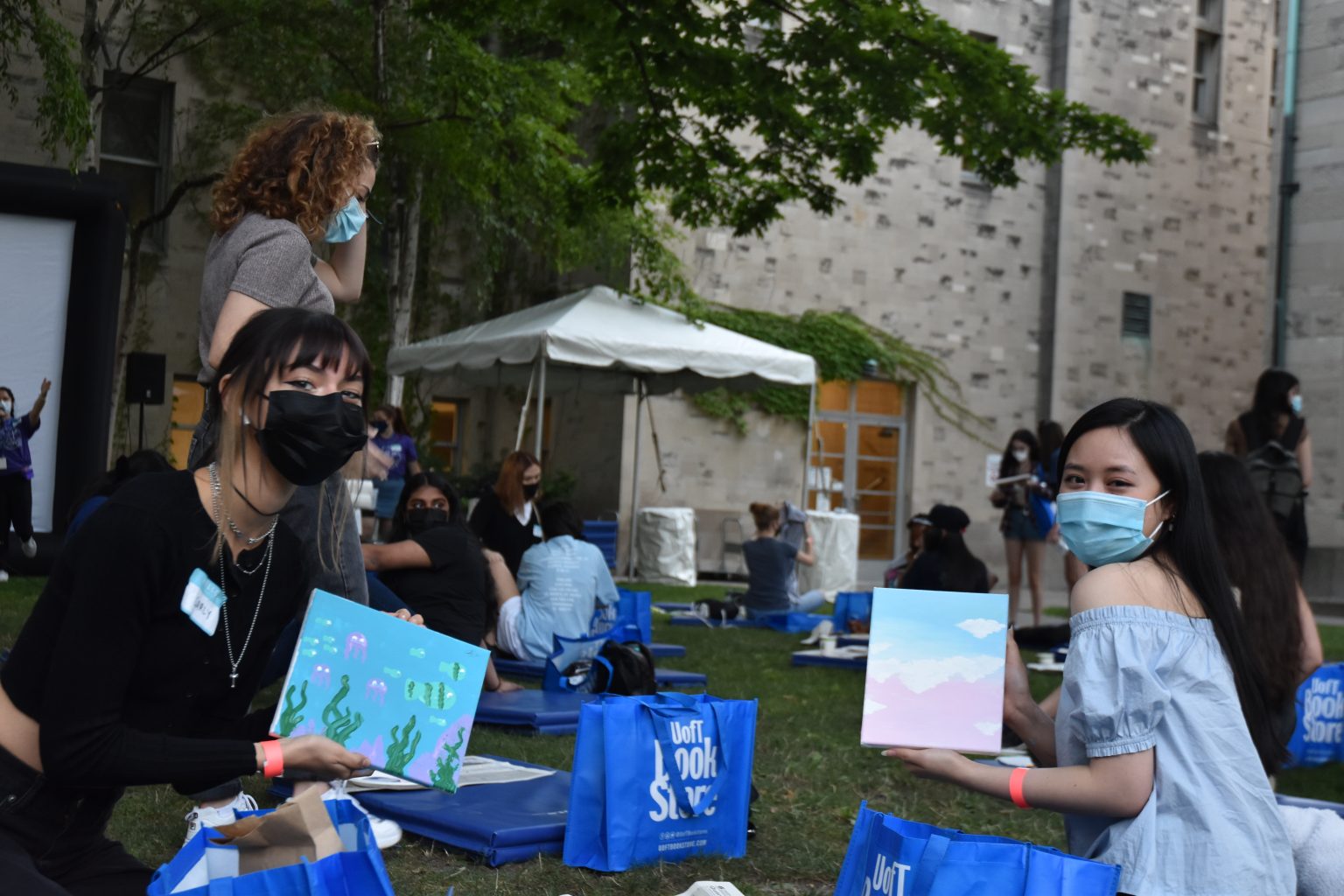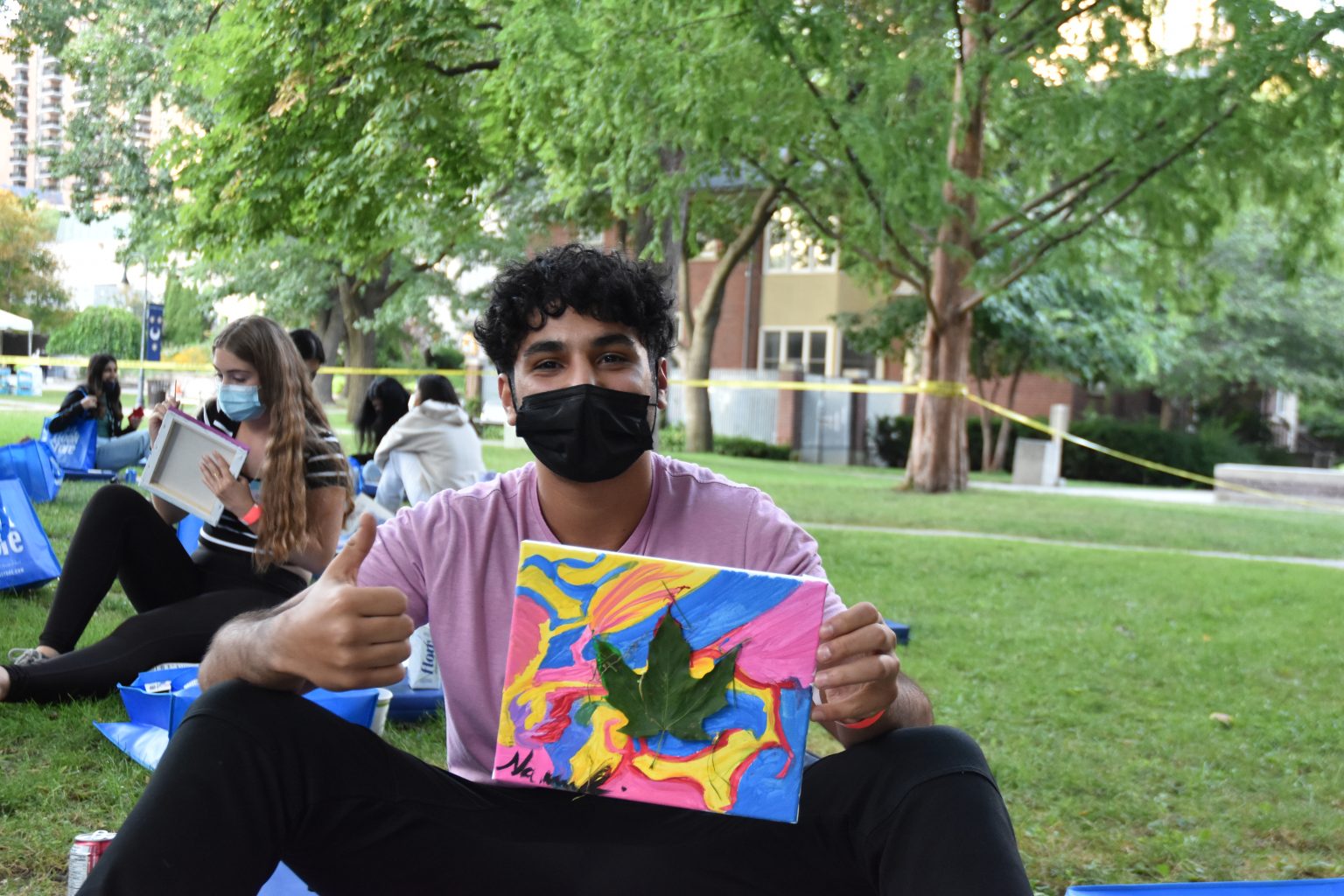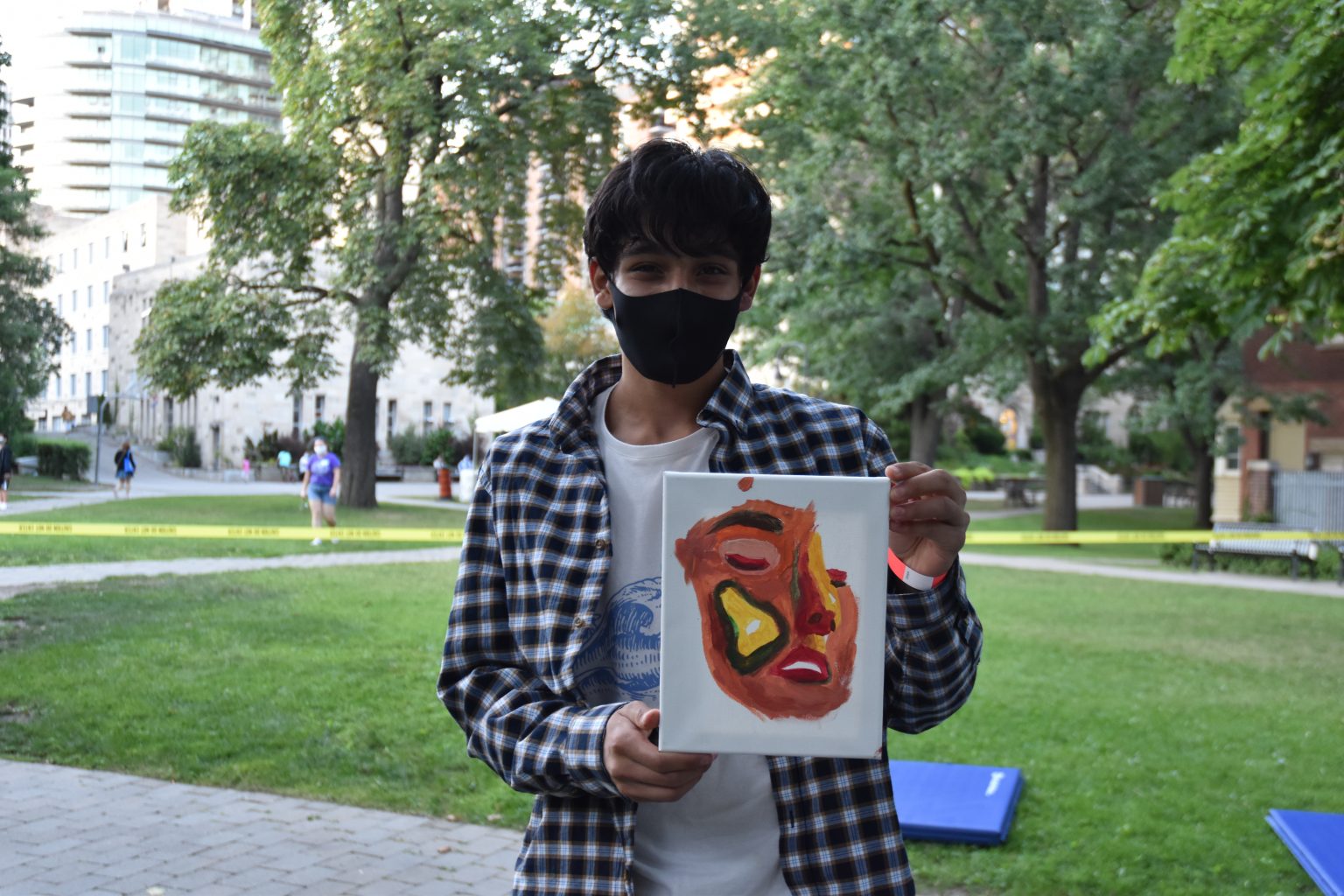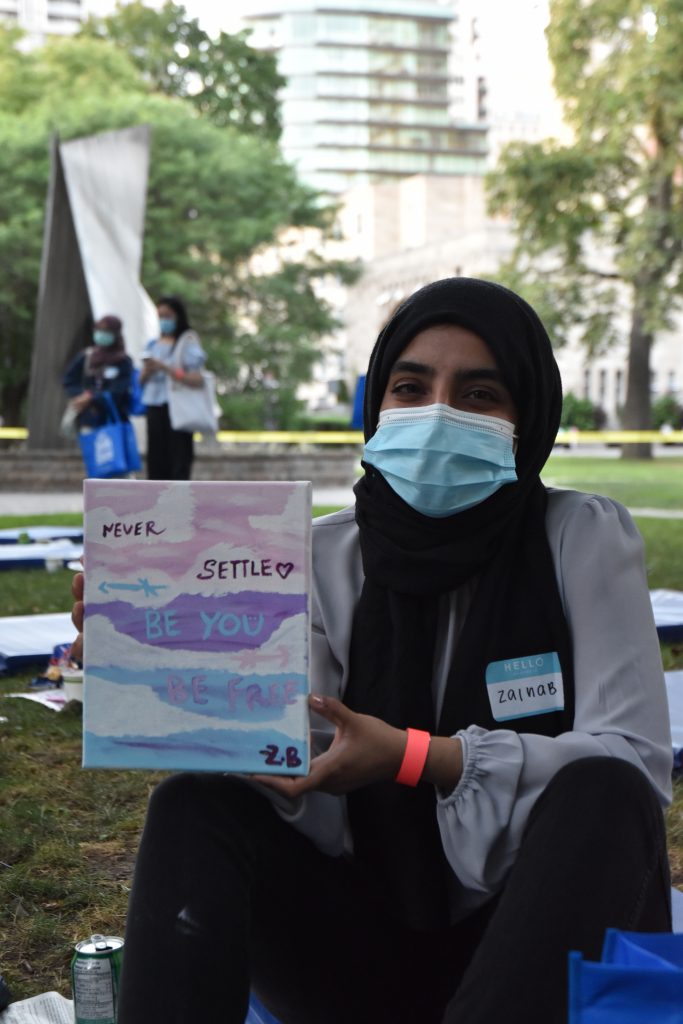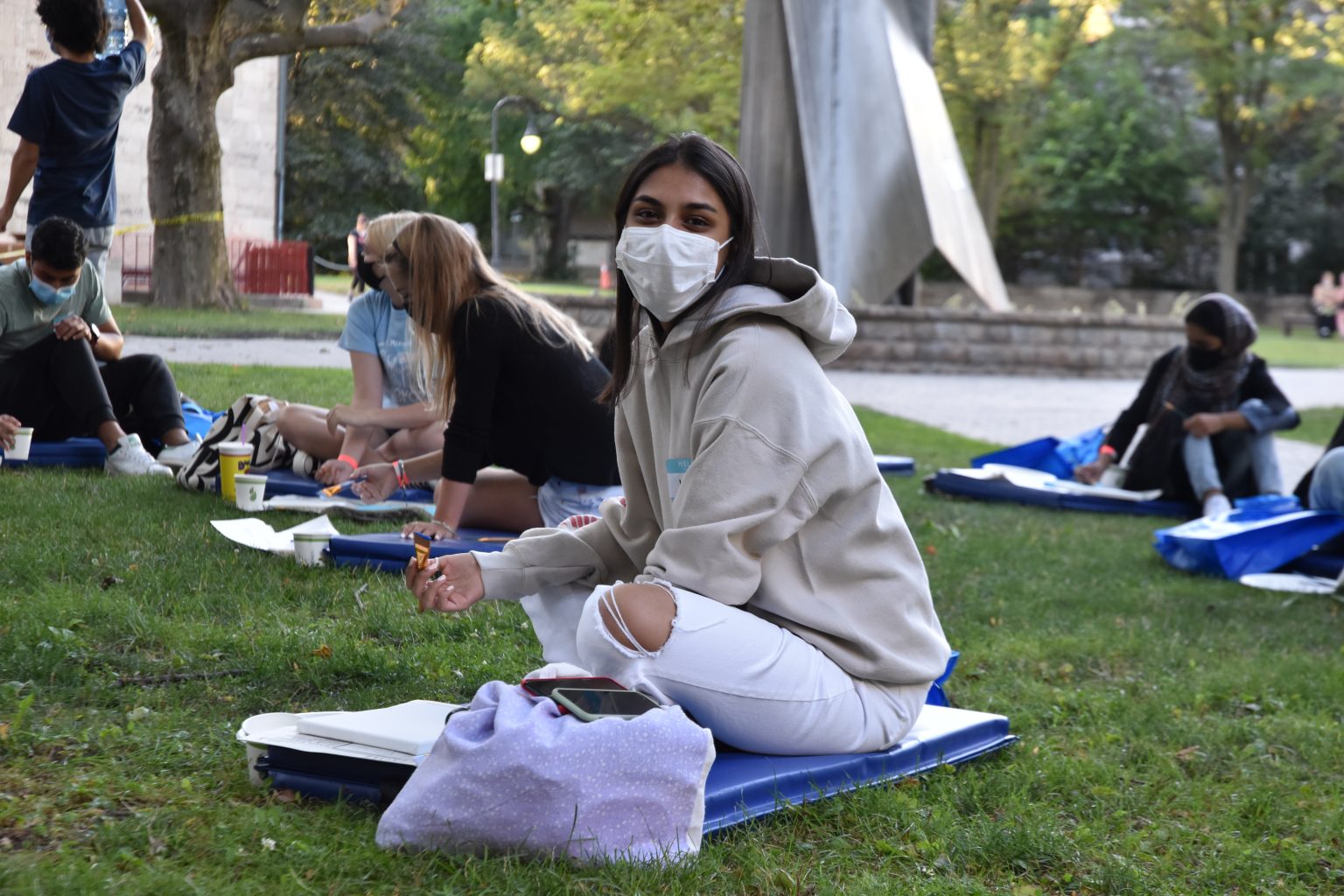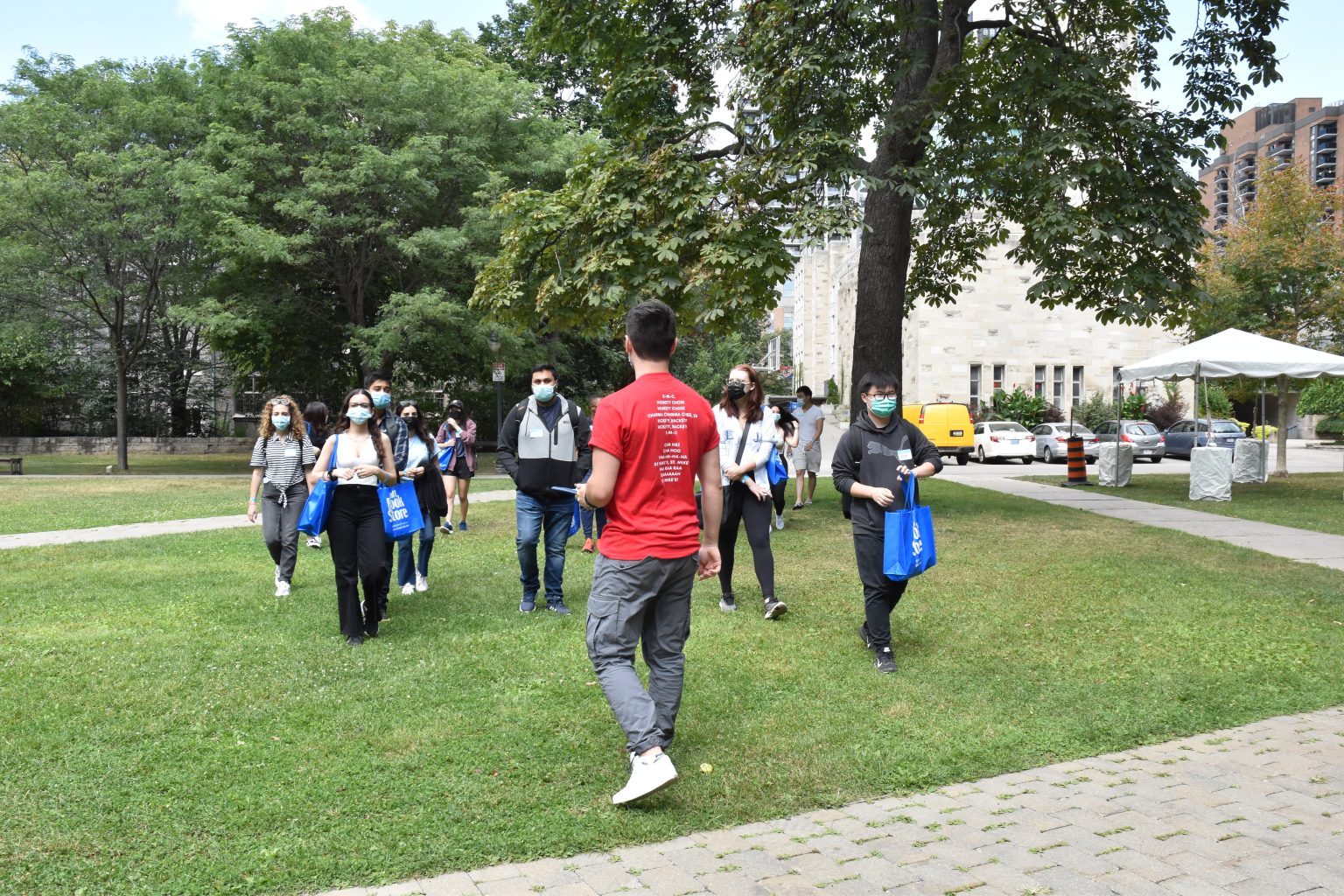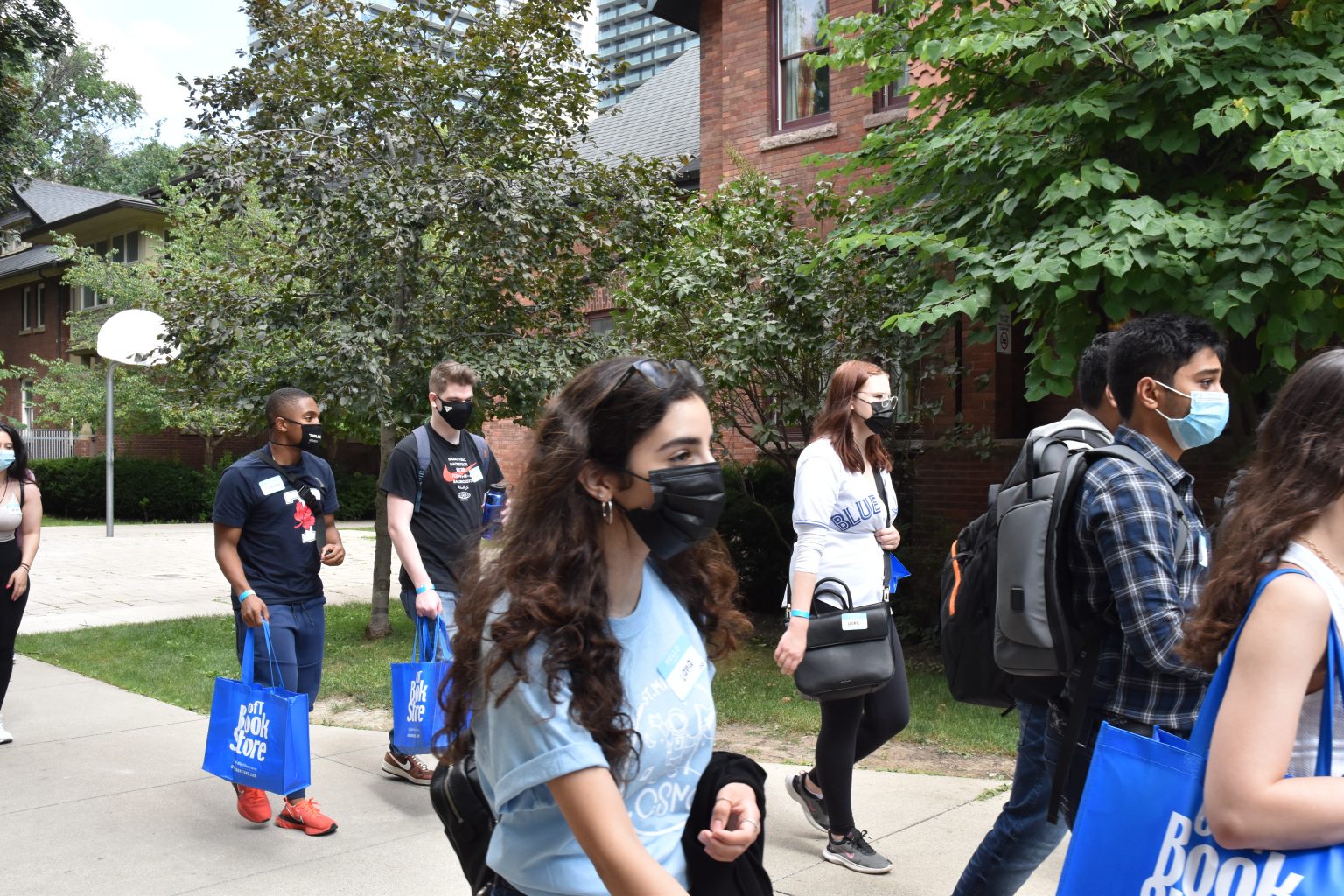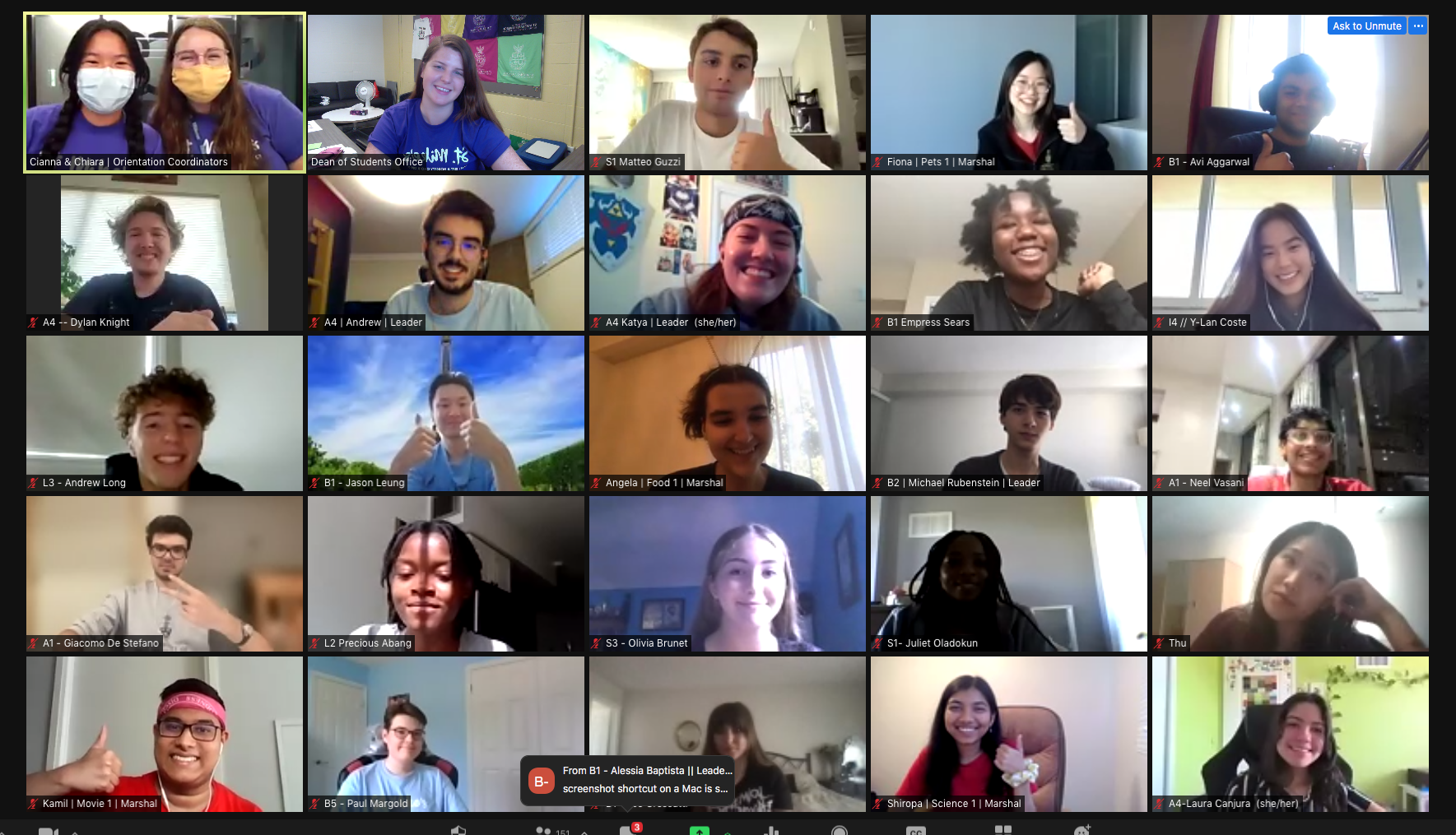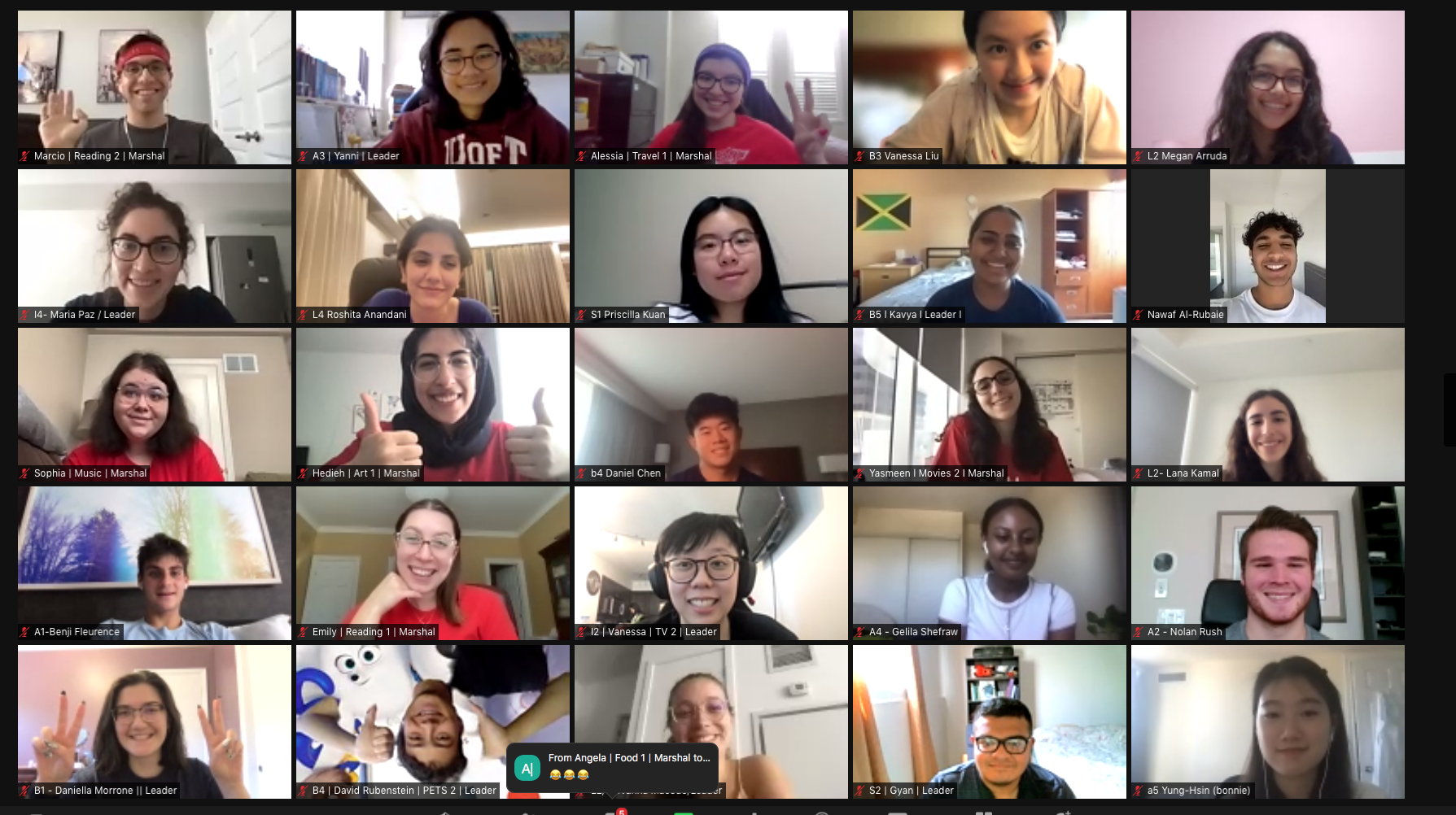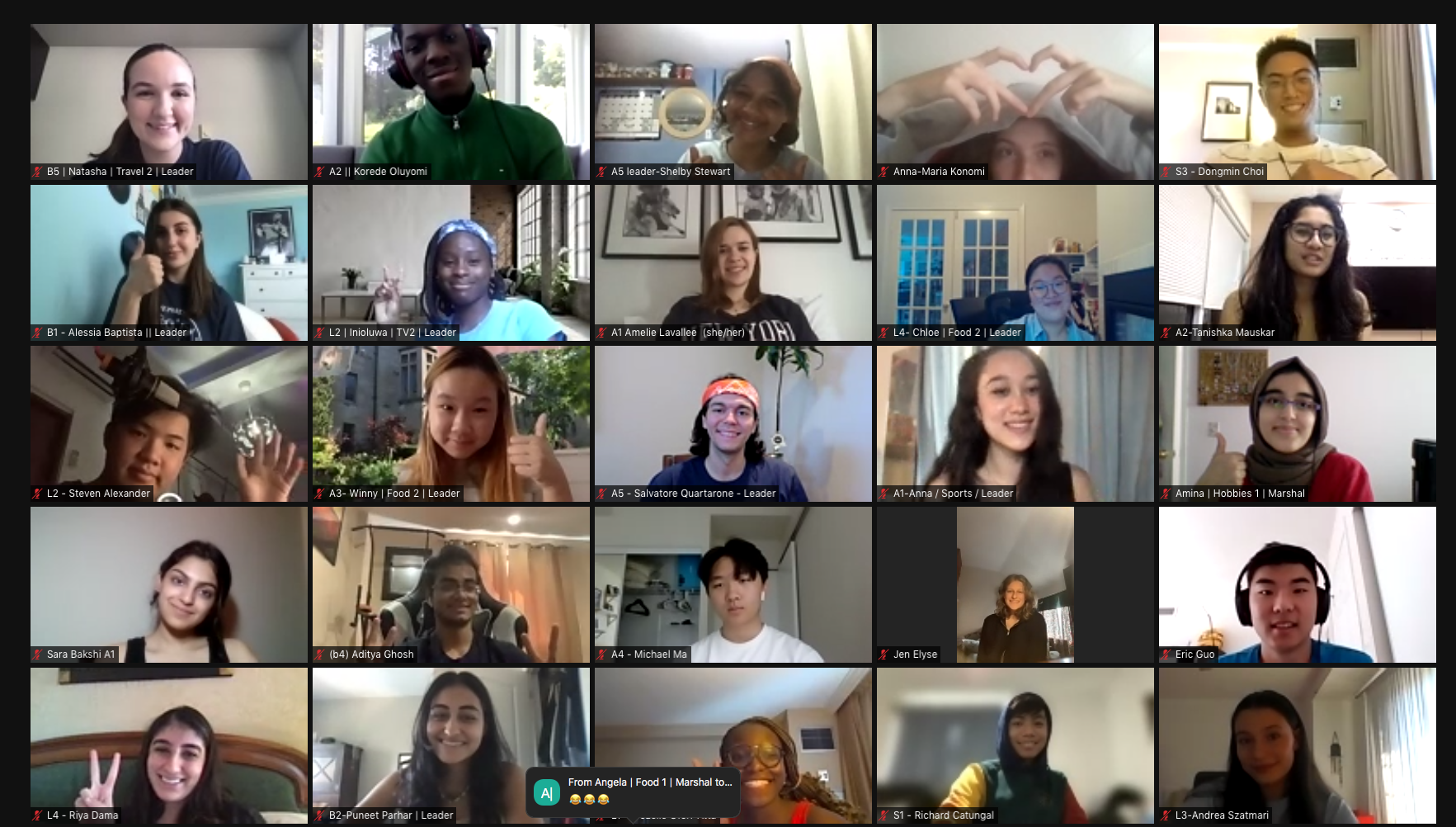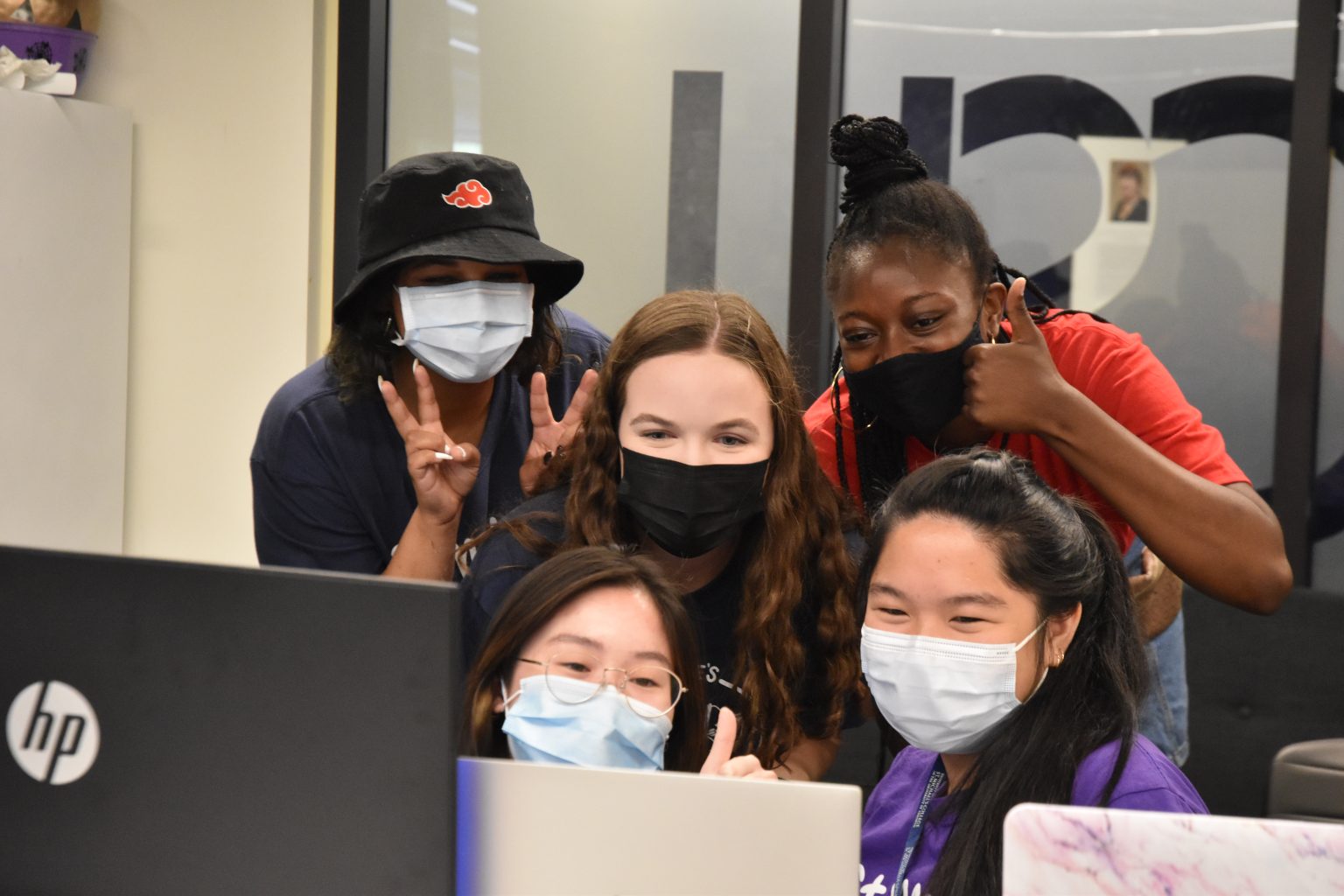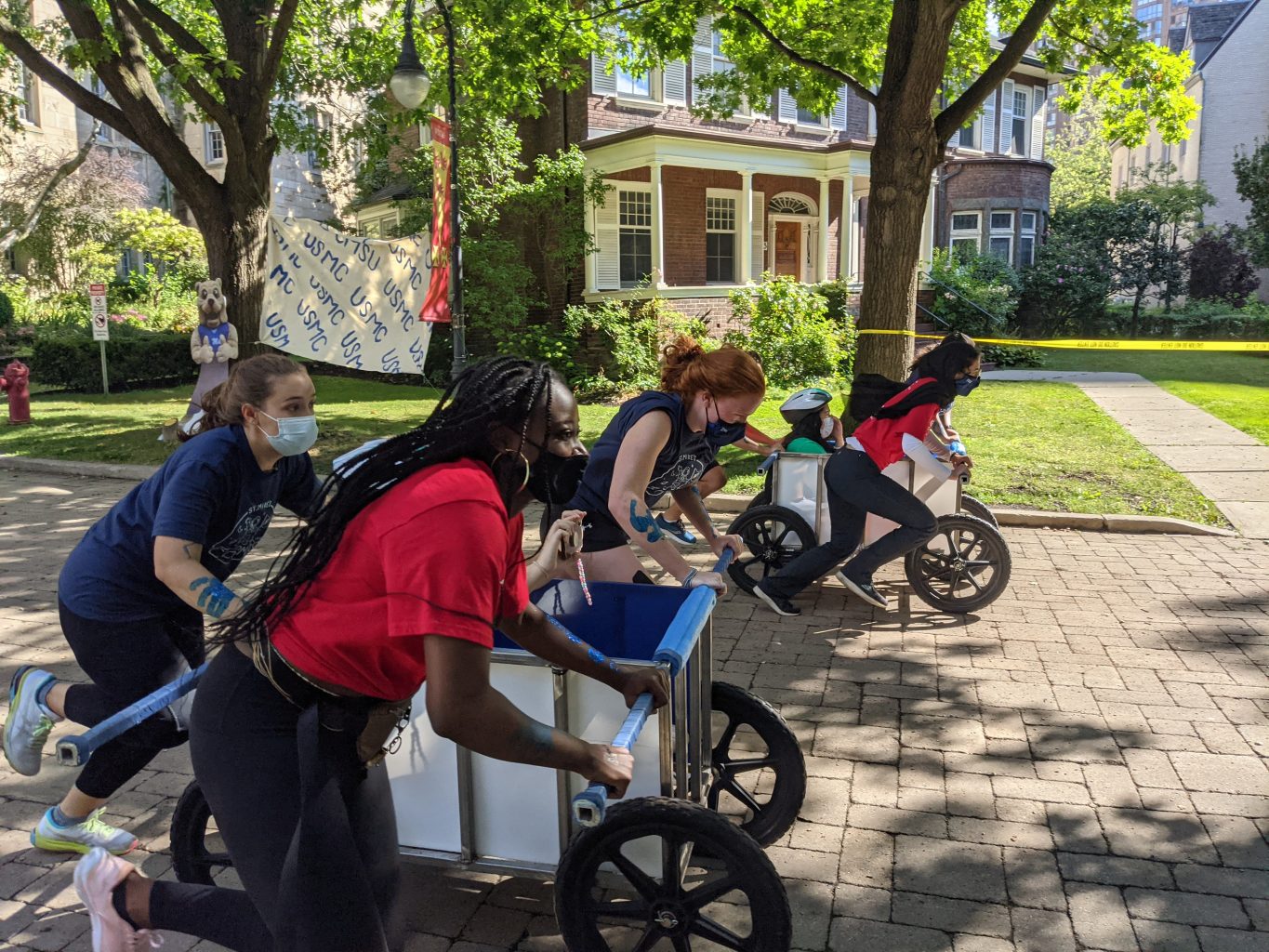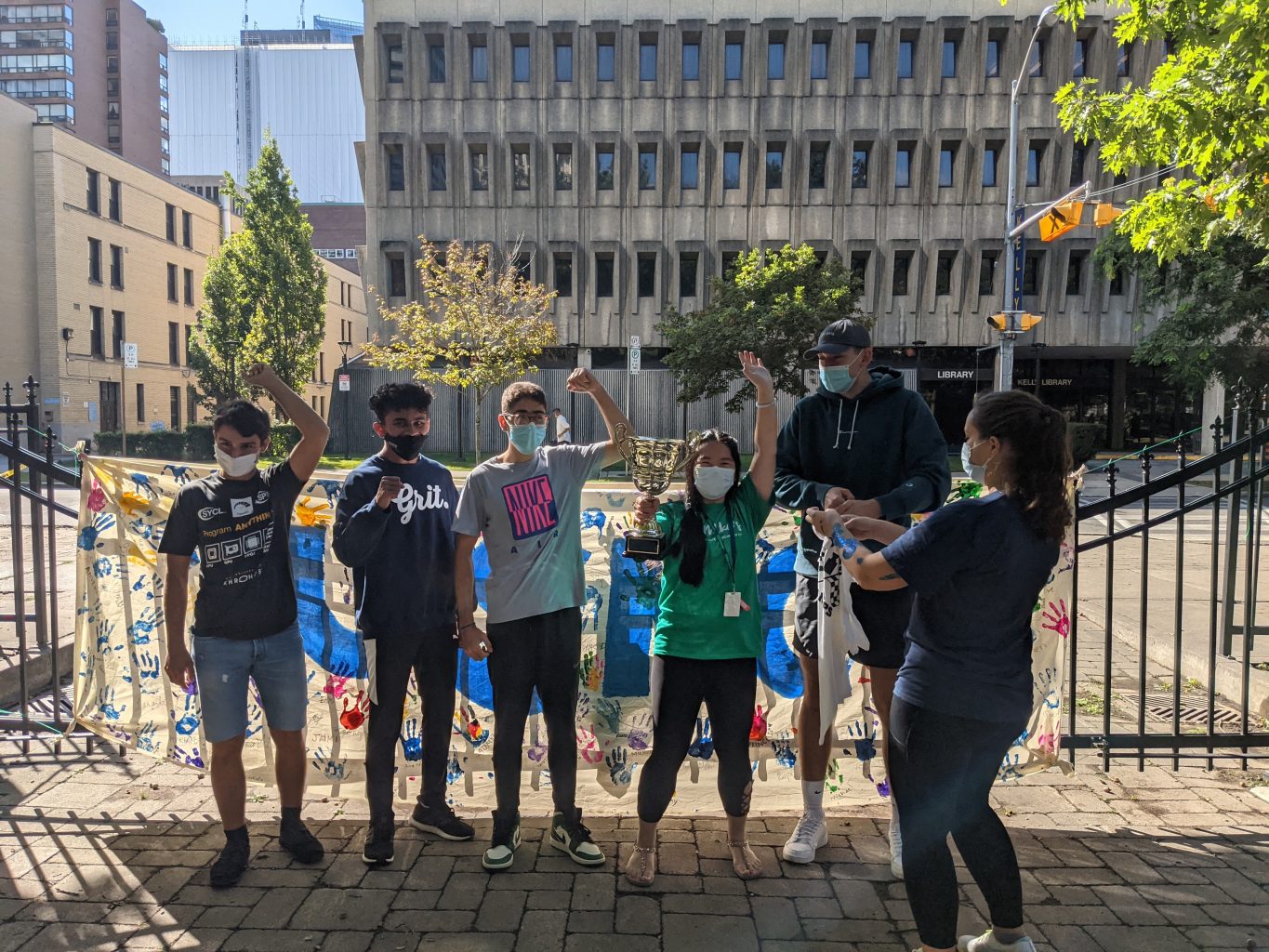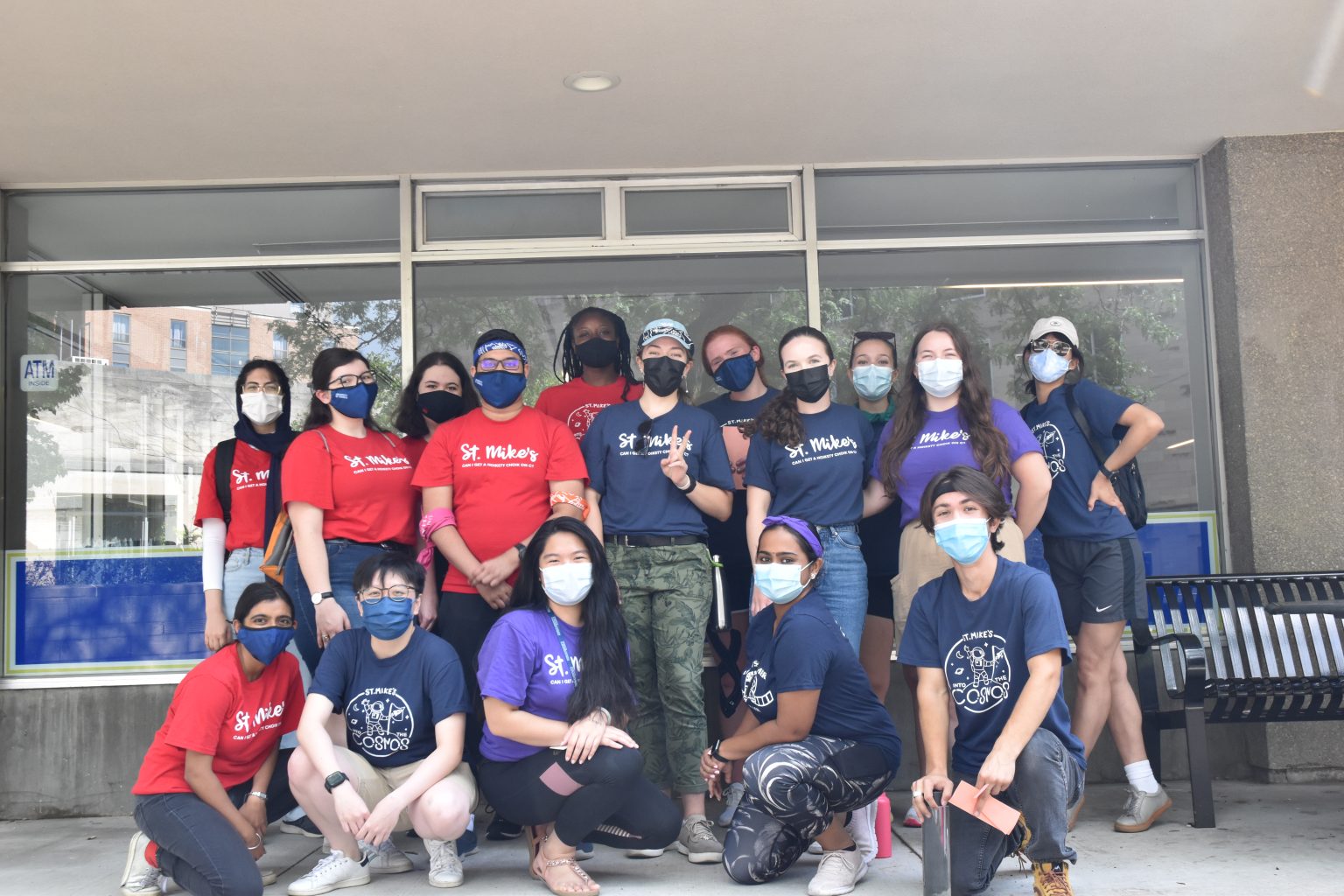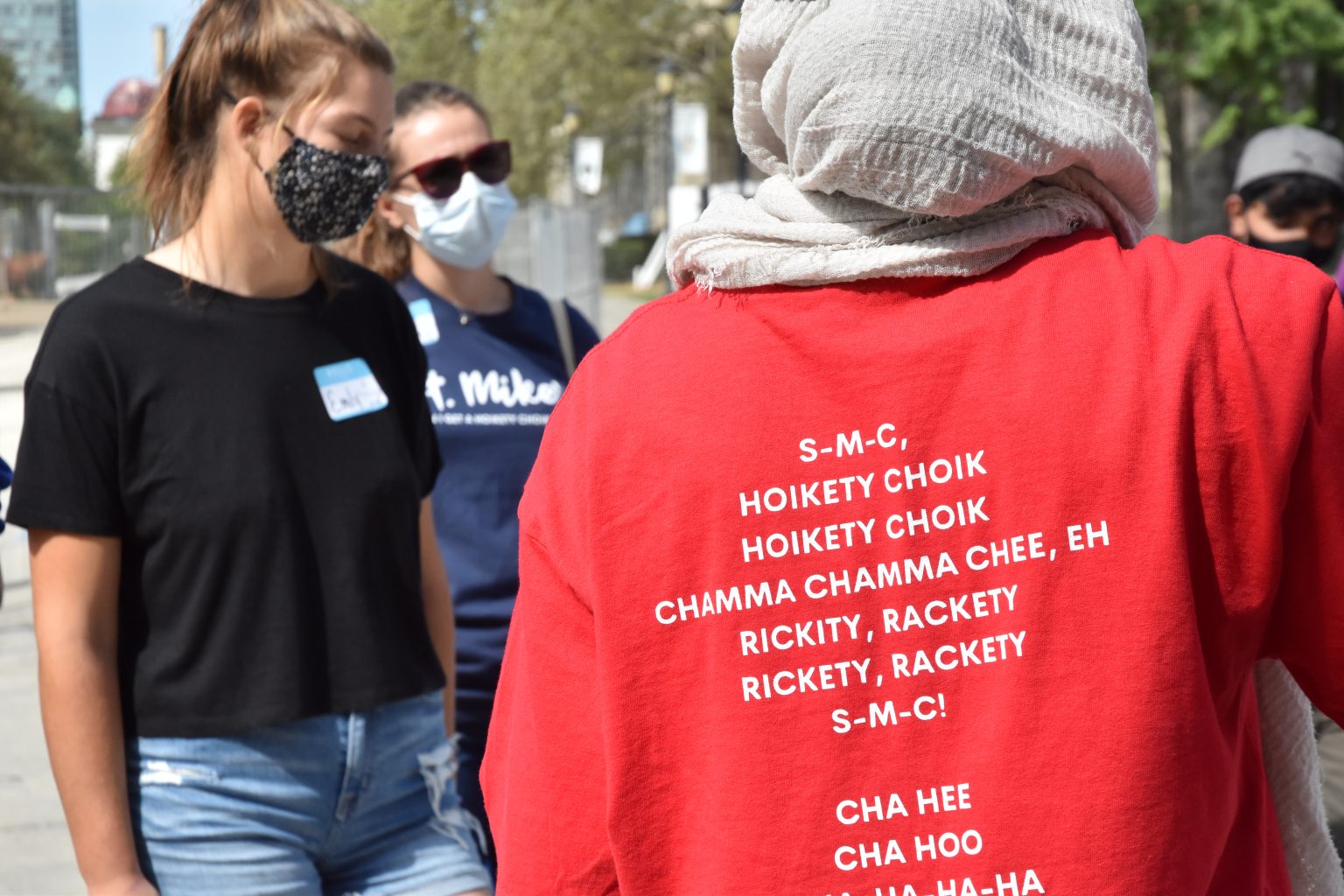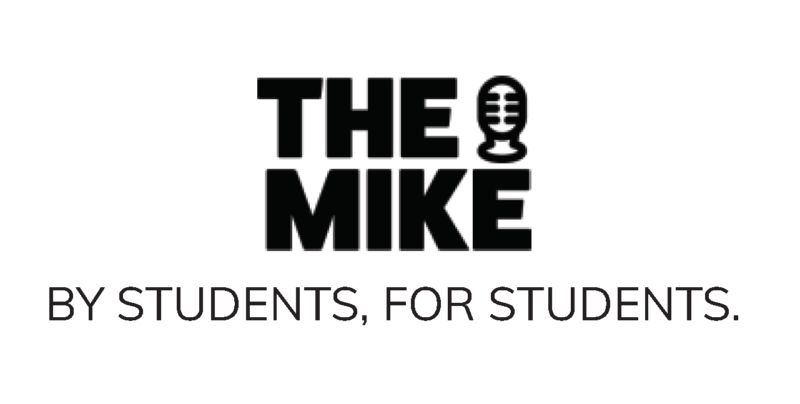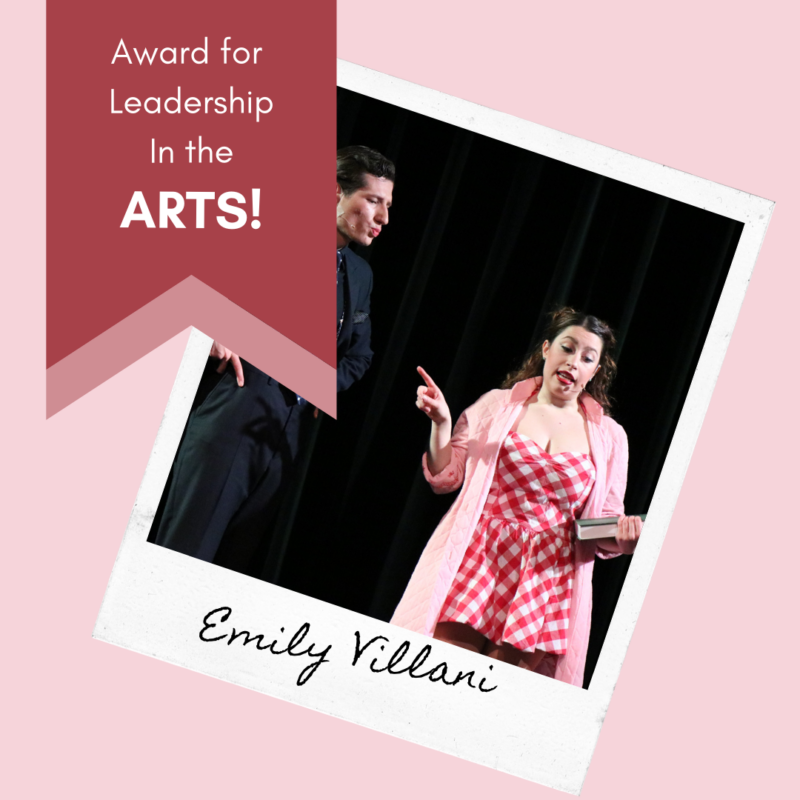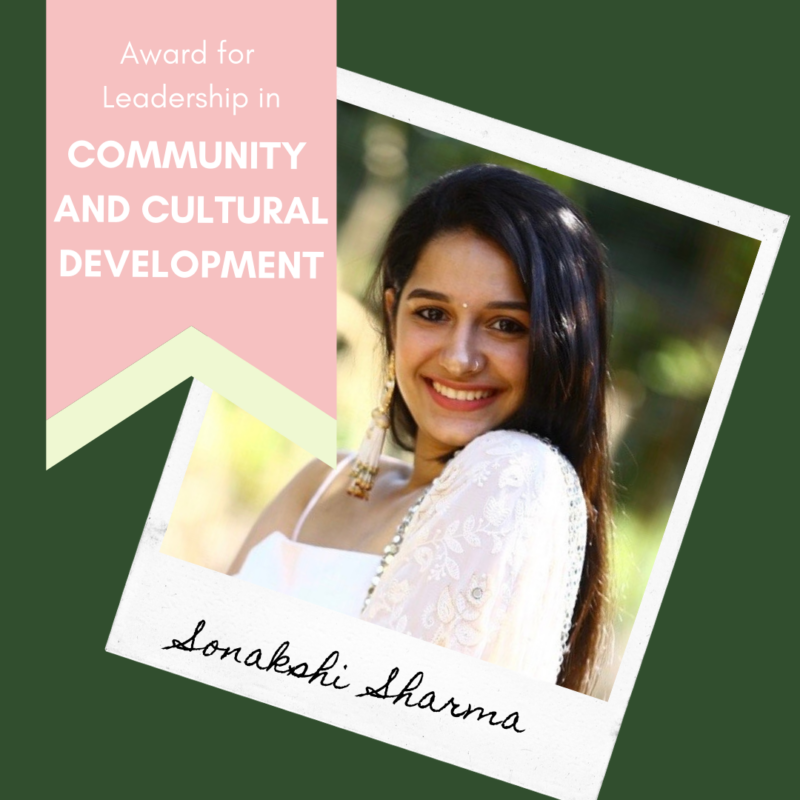This past week, we were thrilled to welcome the class of 2025 to the St. Mike’s community. Orientation felt even more special this year because students were able to safely attend many events in person, on campus. Enjoy these photos of Orientation 2021 by St. Mike’s student Isabel Padolina.
Read other InsightOut posts.
Maya Martin-Spisak is a third-year student majoring in History, with a focus in Law and History, and double minoring in Linguistics and Book and Media Studies. She is from San Diego, California but has also lived in other parts of the U.S., the Philippines, Belgium and Taiwan. At St. Mike’s, she has served in various roles in the Mentorship Program, Orientation, Residence Council, and House Councils. She is currently serving as the Mentorship Program Coordinator and Residence Council President.
My Experience as an Asian-American Woman
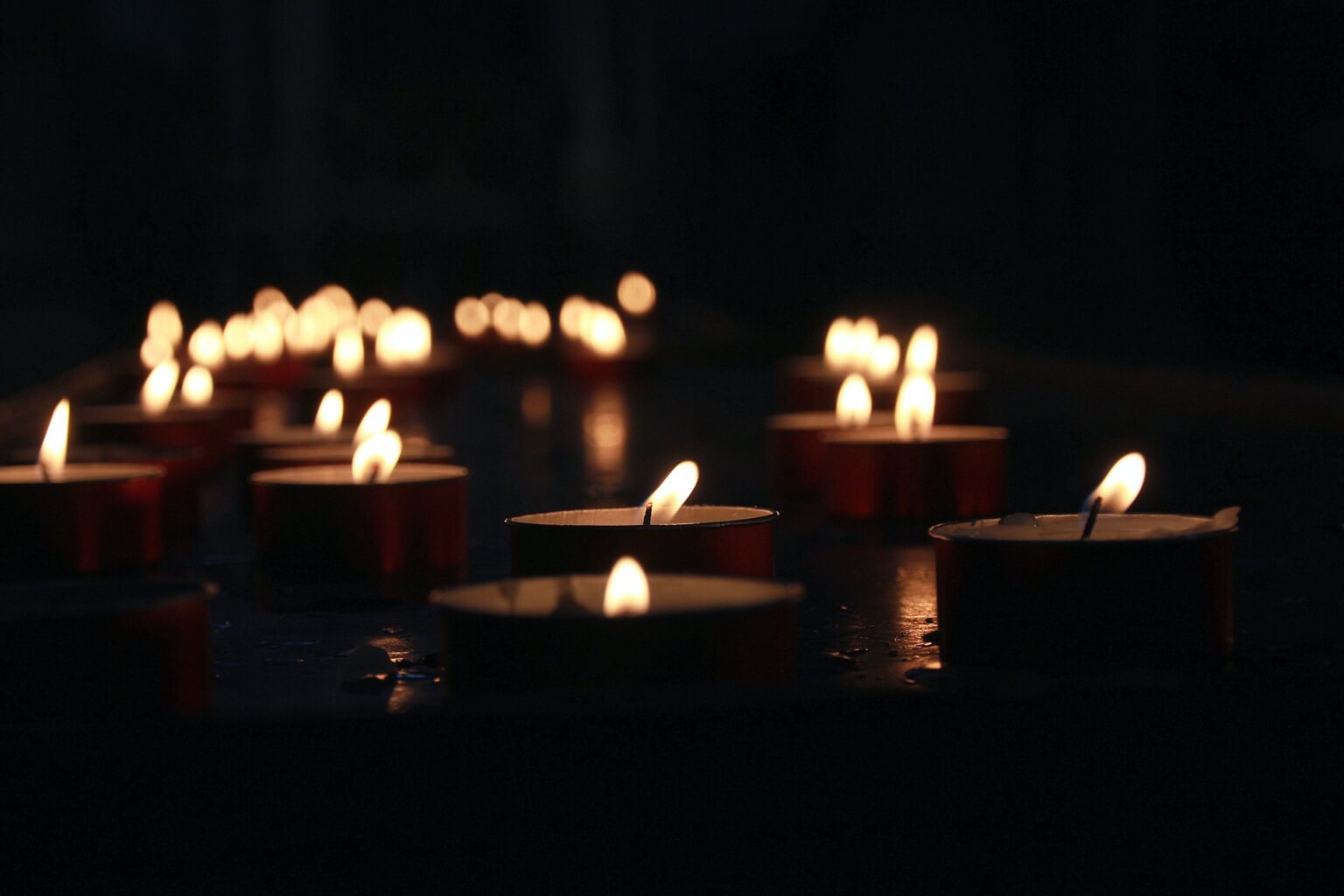
Firstly, I want to acknowledge that the following article is about my personal experience and is not meant to represent anyone else’s.
I was originally going to write about my 58 days in self-isolation quarantine. However, due to the recent events in Atlanta and the steep rise in Asian hate crimes, I thought it was more suitable to write about my experience as an Asian-American woman, though I’m not sure what to write. There’s so much to unpack and I don’t know where to start without feeling overwhelmed. How am I supposed to react when people who look like me are the targets of assault and hate crimes? How are we supposed to speak with our communities in a way that is productive for everyone, including people who refuse to acknowledge the hardships of minority communities? There isn’t one way or easy answer to any of this. I’m still mulling over these questions and processing all the events that have happened in the past year. But I’ll tell you what I’ve come up with so far:
The murder of Sarah Everard was gut-wrenching. She took every safety precaution she could on her walk home. Everard’s case highlighted the violence and harassment women face. And not even two weeks later, we wake up to hear about the terrible events in Atlanta. It gave me a wave of emotions. I was devastated to hear about more violence against women and yet another mass shooting in my home country. It broke my heart that someone had deliberately targeted the spas and killed Xiaojie Tan, Daoyou Feng, Hyun Jung Grant, Suncha Kim, Soon Chung Park, Yong Ae Yue, Delaina Ashley Yaun Gonzalez and Paul Andre Michels. I felt infuriated when Captain Jay Baker defended the killer, saying that he was having a “bad day.” And I was scared by the thought that I or someone I knew could be a victim of another attack. But through all that, I was and still am thankful for my friends and family who reached out to offer their support.
Later that day, I tried going on a walk to recenter myself but after reading about the significant rise in Asian hate crimes in Canada, I found myself on edge and looking over my shoulder the entire time. As a woman, I’m always careful of where I go. However, due to recent events, I have felt like I needed to be even more cautionary because I am an Asian woman and I felt like those two factors made me a very vulnerable target. It was similar to a feeling I had almost a year ago at the start of the pandemic: people who looked like me did not belong here. Rewind to this time last year: It was after one of former U.S. President Donald Trump’s press conferences where he had blamed China for the spread of COVID-19 and referred to it as the “China virus.” I had gone to a store to pick up some moving supplies where I seemed to be one of two East Asian people there. The other customers in the store made a point to avoid the two of us at all cost as if we were the only two people who could carry and spread COVID-19. The customers didn’t care about how close they stood to each other as long as the other East Asian person and I weren’t near them. In both cases, I was scared of the people who were scared of me because of their prejudice against Asians.
This prejudice is not new; it has been around for a long time. In Canadian history, many policies have codified Asian prejudice into law. The Chinese Immigration Act of 1885 made it so that the Chinese were the only ethnic group required to pay taxes to enter the country, and through the Chinese Immigration Act of 1923 the government banned Chinese immigration with little exceptions. An indirect result of these acts was the model minority myth, along with micro-aggressions, stereotypes, slurs, and fetishization—all of which are still present today and things I have experienced.
It’s taken a lot of effort to work through my identity. I am a Chinese adoptee raised in an American family. I don’t speak Mandarin, celebrate a majority of Chinese holidays, or have Chinese family members. When I was younger, I didn’t feel part of the Asian community. But even then, I had internalized and normalized a lot of the micro-aggressions, stereotypes, and model minority myths used against the Asian community. The “(you are not American, you are a foreigner) where are you really from?” and the “You’re good at that because you’re Asian.” I found myself discrediting my achievements and hard work by attributing them to my ethnicity instead. There was a point where I wished I had paler skin and Eurocentric features because of the media around me. I grew up in a household that pushed me to study what I wanted, but I still felt ashamed when I decided to major in the humanities over STEM because of the Asian STEM stereotype. And yes, being polite and successful are great traits to strive for but the model minority myth takes those characteristics and erases the rich diversity of Asian–North American backgrounds by creating a monolithic monster full of misconceptions. It took me years of work to break down those internal stereotypes, prejudices, and myths that had been part of my foundations from an early age. And I know I’m not done. Erasing those preconceived notions and internalized racism will be something I have to work on for the rest of my life.
In relation to recent events, I am grateful that people have taken to their media platforms to educate themselves on facts and misconceptions about Asian communities. But it’s not enough. It takes a lot of time to read, question yourself, and feel uncomfortable to undo the prejudices that are rooted deep within ourselves. And it’s important to listen to the stories and experiences people give, they can provide a perspective you might have not thought of.
Overall, my experience as an Asian-American woman has been difficult at times but I wouldn’t change it. I’ve grown a lot and become more confident in my own skin and great heritage. I hope other people find ways to do the same.
Read other InsightOut posts.
Chiara Greco is a fourth-year student studying Philosophy and English at St. Mike’s College. Since her second year she has been involved with student journalism and harbours a deep passion for the field. She is currently the Editor in Chief of The Mike, our official student newspaper.
The Importance of Student Journalism to Campus Life
When I reflect on the importance of student journalism, especially in a time when we have been struck with a global pandemic, my immediate reaction is to create a defence of the field. To rake up all the reasons in my head why student journalism is important and worthwhile. While I can’t be sure where this response came from, I am sure that many people question the choice of being a student journalist—of the added stress without perhaps the large reward or payoff, or even exposure, that professional journalists get in breaking stories. While I’ve been told the career path I have chosen may be a “dying field” I’ve still prospered through my experience and, if anything, this global pandemic has shown me exactly why student journalism is so important.
In a time of social distancing the importance of staying connected through stories, media, and news is so pertinent. Our current global crisis has unveiled the dependence we all have on media and news to connect us. I’ll be the first to admit that virtual living—and learning, for that matter—can be very impersonal, and presents a challenge to most. But the job of student journalists is to bridge this gap between virtual life and ‘normal’ life for students across the university community. Student journalism is a pillar of university life on campus, and with our new-found virtual world, student journalists are those who will form the path towards online community. Stories are the basis of life, the overarching connection we all have to each other, and it is through journalism that these stories get communicated.
While my experience will not speak for everyone, I understand the importance of representing the masses, of being a voice to and for the unheard, and of cultivating a personal experience through our shared stories. Student newspapers like The Mike are an avenue in which this cultivation takes place—and, frankly, it’s hard to imagine university life without student newspapers or the journalists who staff them.
My time at St. Michael’s College has been defined by my involvement with The Mike, starting at the beginning of my second year. From working on the news team to becoming the Editor in Chief, I’ve understood that student journalists have a nuanced responsibility to their peers. We have a responsibility not only to hold our school accountable but also to be a reliable source of student life and news. Integrity, facts, and accountability summarize the three pillars which have come to define my experience of student journalism, and they will continue to guide me through my role with student publications.
Over the summer as I prepared for my role as Editor-in-Chief I faced many challenges in reinventing the paper as an online periodical. The future of The Mike fell into my hands, and while it may have seemed like a large task to take on, especially with the challenges of the pandemic, I was privileged to represent the St. Mike’s community. As I transitioned into my role I began to prepare for things none of my predecessors had to ready for—how to run a printed student newspaper during a global pandemic. With no precedent, changing the course of The Mike meant I had to evaluate the immense role student newspapers have within the university community. To put it simply, without student newspapers one of the most crucial aspects of student life would be taken away. In this way, The Mike’s achievements and success translate directly into St. Mike’s overall successes and achievements.
For as long as can be remembered The Mike has delivered students with a print version of the paper across campus newsstands. But the newspaper has been forced to make some hard decisions, such as forgoing our printed paper for now. But since The Mike’s inception our intake of news as students has changed drastically. While an online publication may take away the feeling of holding a physical copy of your work, we now rely more than ever on online avenues to give us news and connection, so The Mike’s online home has gone through a complete 180. We’ve changed our website and delivery to allow more students to access and stay up to date with our publication and newsletters.
It is the duty of student journalists to deliver their colleagues’ voices on campus. The importance of cultivating a community across borders is exactly why student journalism is so valuable, because without it the distance between us would be far exacerbated. Student journalists, like professionals in the field, need to become experts on our own community. We need to become a voice for those students who may otherwise not be represented on campus. But this wide range of representation is only accomplished if students contribute their voices. The more voices published in The Mike, the more the diverse and accurate the representation of our community. So while a printed copy of the paper would be an ultimate goal, we have to remember the importance of accessibility and inclusivity when representing the student community. In a time of social distance, it only makes sense for student journalists to present student life as such.
While this pandemic has taught me many things, both good and bad, navigating my role as a student journalist and Editor in Chief of The Mike will perhaps be one of my biggest takeaways. Student journalism is at the heart of every university and college campus. It’s what connects us all.
Read other InsightOut posts.
Although the COVID-19 pandemic drew life on campus to an early close, St. Michael’s students continued to enrich the community with their talents and service as their coursework and extra-curricular activities transitioned to online platforms.
This year’s Student Life Leadership Awards recognize the outstanding extra-curricular contributions to the University and the St. Michael’s community as a whole during a particularly challenging time.
New awards recognizing Service in Student Mental and Physical Wellbeing, Leadership in Community and Cultural Development, and Outstanding Contributions to Social Justice Initiatives were introduced in 2020 to highlight areas of distinct interest to St. Michael’s students, staff and faculty.
Several awards recognize creative initiatives that are a vibrant part of campus life, including student publications and the arts. “The theatre is a space for people of all different experiences and backgrounds to come together and work to create something beautiful,” says third-year student Emily Villani. As Artistic Director for SMC Troubadours, Villani oversaw and performed in theatrical productions, including a recent production of Guys and Dolls.
Other awards recognize the work of students to foster inclusion, social justice, and a deep sense of welcome. A major goal for Sonakshi Sharma, a third-year student and Executive member of the Indian Students’ Society at U of T, is to help international students find more familiar and comfortable spaces in campus community—especially in the area of cultural representation. “I believe building such a community is important for students in order to have a comprehensive university experience,” says Sharma.
Athletics, a longstanding area of achievement and an important part of the education of the whole person at St. Michael’s, is another area in which students are being recognized for leadership and service to their peers. “Intramurals are an incredible foundation for a social and athletic life on campus!” says Mika Embury, fourth-year student and recipient of the Mary H. Lee Award for Leadership in Women’s Sports.
Student Life Associate Emma Graham describes the recipients as “leaders who actively encourage their peers to get involved, follow their dreams, and build up others.” Their influence has helped other students at the college become active participants in community life outside the classroom. Each award is peer-nominated, which means that each recipient is being recognized not only by the College, but by fellow students who benefited from their service.
The full list of the 2020 Student Life Leadership Awards can be found below, with more details available on Facebook.
- Award for Leadership in the Arts: Emily Villani
- Award for Leadership in Community and Cultural Development: Sonakshi Sharma
- Award for Outstanding Contribution to Social Justice Initiatives: Adam Da Costa Gomes
- Award for Excellence in Peer Mentorship: Sam Gruppuso
- Award for Outstanding Exhibition of College Spirit and Pride: Simran Dhir
- Award for Service in Student Mental and Physical Wellbeing: Christeen Salik
- Award for Leadership in Student Publications: Ian Hauber
- Award for Male Athlete of the Year: Victor Wakelin
- Sr. Kathleen Heffron Award for Female Athlete of the Year: Elaine Pityn
- Mary H. Lee Award for Leadership in Women’s Sports: Mika Embury
- Kevin Fawcett Award for Freshman Athlete of the Year: Eloïse Alarie

